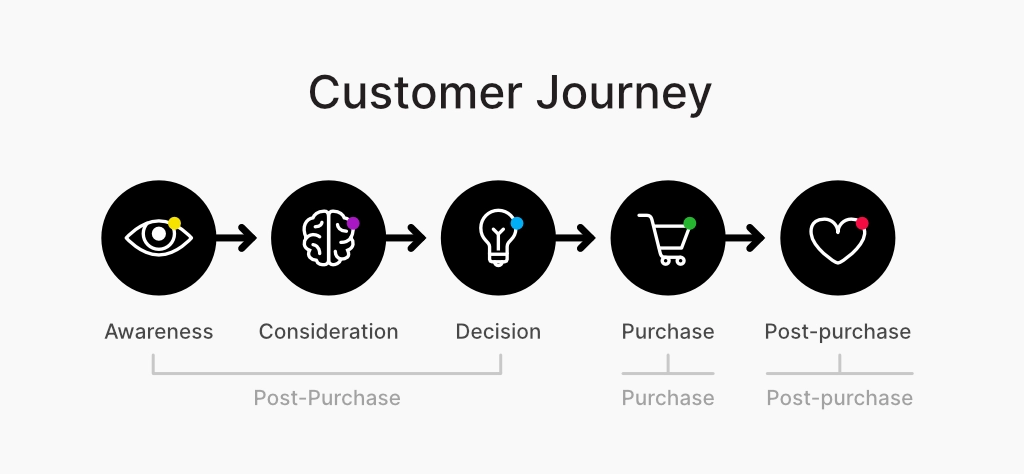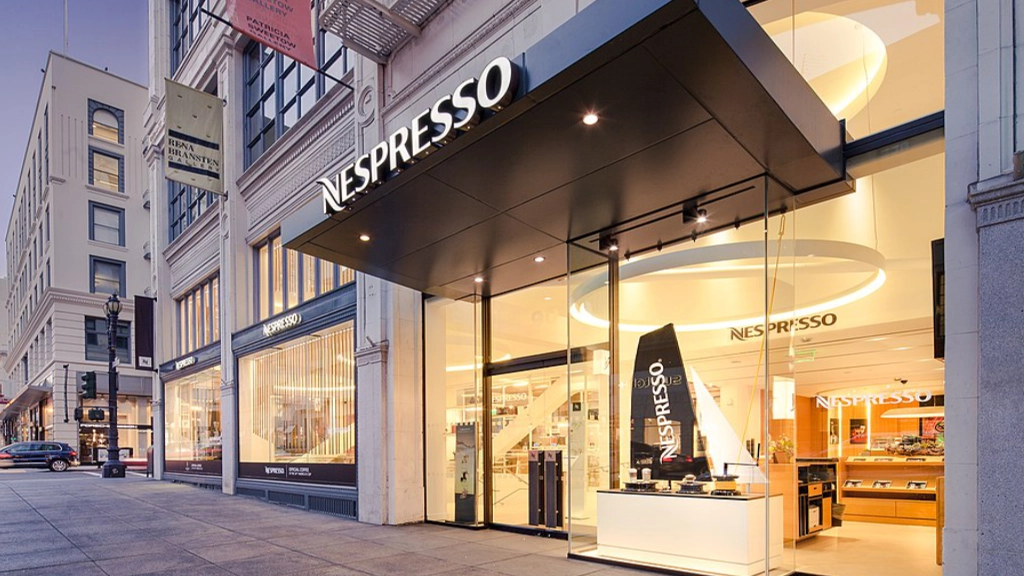Consumers engage with brands through countless channels: websites, social media, emails, retail stores, customer service interactions, and beyond. Each interaction, known as brand touchpoints, shapes the way your customers perceive your brand. Consistency across these interactions is the backbone of your brand’s identity, credibility, and success.
A recent study by Demand Metric found that consistently presented brands enjoy a 23% increase in revenue compared to inconsistent ones. Maintaining a unified identity across every brand touchpoints allows your brand to build powerful relationships based on trust, recognition, and loyalty. Consistency not only elevates the customer journey but positions your brand strongly for sustained growth and success.
What exactly are brand touchpoints?
Brand touchpoints are all the interactions your customers have with your business, both digital and physical. Think of them as moments your brand has to impress, engage, or connect with customers, including:
Physical interactions
Store visits, packaging, signage, printed materials.
Digital interactions
Your website, social media accounts, email newsletters, apps.
Customer support
Chats, calls, help centres, FAQ pages.
Marketing materials
TV and radio ads, billboards, brochures, digital campaigns.
Every single touchpoint leaves an impression. If these impressions are consistent, customers feel reassured, creating trust and recognition.

Mapping touchpoints across the customer journey
To understand how consistency impacts your business, it helps to visualise the customer journey as a path with five key stages: Awareness, Consideration, Decision-making, Purchase, and Post-purchase engagement. Each stage involves specific interactions that shape customer perceptions and drive actions:

Awareness
At the awareness stage, potential customers first come across your brand. Initial touchpoints like advertisements, social media posts, blog content, or recommendations from friends and family introduce customers to your products or services, making consistency crucial to creating a memorable first impression.

Consideration
As customers move into the consideration phase, they’re now actively gathering more detailed information. Consistent messaging across your website, brochures, online reviews, and customer testimonials reassures potential buyers about your brand’s reliability and value.

Decision-making
During the decision-making stage, customers weigh your offering against competitors. They engage closely with detailed touchpoints like comprehensive product descriptions, sales representatives, personalised emails, demonstrations, or customer reviews. Ensuring these interactions remain consistent and clear helps build confidence in your brand and guides customers towards choosing you over competitors.

Purchase
Even the purchase phase has critical brand touchpoints. Whether it’s navigating your website’s checkout process, interacting with in-store staff, or receiving confirmation messages, maintaining consistency ensures customers complete their purchase smoothly and without hesitation.

Post-purchase engagement
The customer journey continues well beyond the sale. Post-purchase interactions, such as sending follow-up communications, personalised recommendations, satisfaction surveys, or even thoughtful gestures like birthday cards, reinforce your ongoing relationship with customers. These touchpoints also provide valuable insights for improving future products, services, and marketing strategies. By consistently engaging with customers, you foster long-term loyalty and repeat business.
Why consistency truly matters
Brand consistency is about creating a cohesive identity that customers instinctively recognise. Here’s why this matters deeply for your business:
Building trust and credibility
Trust doesn’t happen overnight. It’s built gradually through consistent experiences. Brands like Apple, Coca-Cola, and Nike have mastered this. No matter where you encounter them, their identity remains clear and predictable. This consistency signals reliability, convincing customers your brand is worth their time and loyalty.
Strengthening brand recognition
In crowded markets, standing out is challenging. Consistency in visual elements, colours, logos, typography, makes your brand instantly recognisable. Imagine Coca-Cola suddenly switching to blue packaging; it would confuse their customers. Consistent visual language anchors your brand firmly in customers’ minds, allowing quick recognition even amidst clutter.
Creating smooth customer experiences
Consistency ensures a fluid customer journey, free from jarring discrepancies. Ever clicked on an advert that looked promising, only to land on a webpage that seems completely unrelated? Such disjointed experiences frustrate customers, pushing them elsewhere. A unified experience across all platforms offers simplicity and fosters customer satisfaction, ultimately increasing brand loyalty.
Enhancing brand equity
Brands with strong consistency often command higher respect and pricing power. Consistent, positive experiences shape perceptions, associating your brand with quality and dependability. Starbucks and Amazon offer consistent experiences worldwide, translating this consistency into greater brand value and loyal customer bases.
Increasing conversions and sales
Consistency reduces friction. When your messages match across channels, customers move smoothly from curiosity to purchase. Studies show brands that maintain consistent messaging are significantly more successful in driving conversions and sales compared to those that don’t.
Aligning internal teams
Brand consistency benefits internal teams as well. Clear brand guidelines ensure all departments, from marketing to customer service, deliver unified messaging. This internal alignment streamlines processes, reduces confusion, and improves overall efficiency, reinforcing your organisational culture.

Real-world brand touchpoints consistency: Nespresso
Nespresso exemplifies outstanding consistency across all brand touchpoints, building an immersive luxury coffee experience. From the moment customers step into their sophisticated boutiques, designed with clean lines, premium materials, and inviting spaces, the elegance of the brand becomes instantly tangible. Online, Nespresso’s website maintains this luxurious feel with sleek visuals, intuitive navigation, and consistent messaging. Even their customer service reflects their premium positioning, offering personalised support and seamless interactions. Not to mention their iconic ads featuring George Clooney, consistently reinforcing a message of sophistication, exclusivity, and refined taste. Every single interaction with Nespresso reinforces its premium identity, securing its status as a trusted and beloved brand globally.
Achieving brand consistency
Achieving consistency requires thoughtful planning and continuous effort. Here’s how:
Create a comprehensive brand guide
Your brand guide acts as a blueprint, covering everything from logo use and colour schemes to tone of voice and imagery. This document guides your team, ensuring consistent execution across all communications.
Audit your current touchpoints
Regularly review every interaction customers have with your brand. Identify inconsistencies or weak points, then correct them swiftly. This audit ensures your brand is portrayed uniformly everywhere.
Establish a centralised content system
Whether it’s cloud-based or managed through a CMS, create a central hub accessible to your team. This ensures everyone uses the latest assets, messaging, and guidelines, keeping your brand aligned.
Continuously update and evolve
The market shifts, trends emerge, and consumer tastes change. Regularly revisiting your branding assets ensures they remain relevant while still true to your core identity. Any updates should enhance consistency, never compromise it.
Conclusion
In the fast-moving, multichannel landscape consumers navigate daily, consistency isn’t optional but it’s fundamental. By maintaining a unified identity across every touchpoint, your brand can build powerful relationships based on trust, recognition, and loyalty. Consistency not only elevates customer experiences but positions your brand strongly for sustained growth and success.
Are your brand touchpoints harmonised, or are they playing different tunes?

Leave a Reply